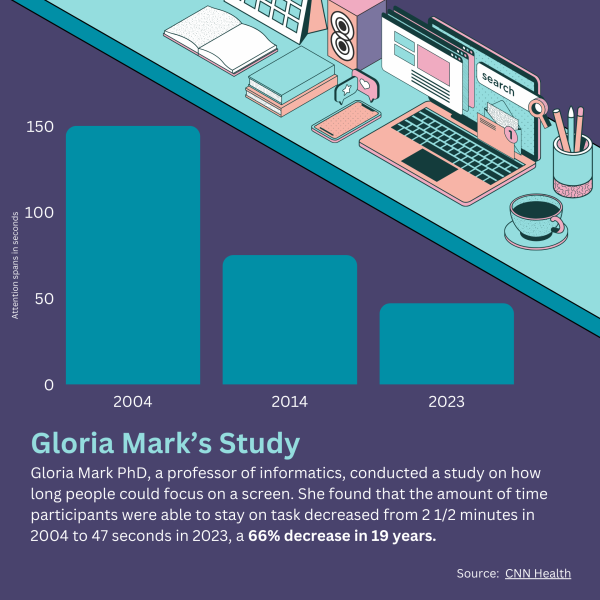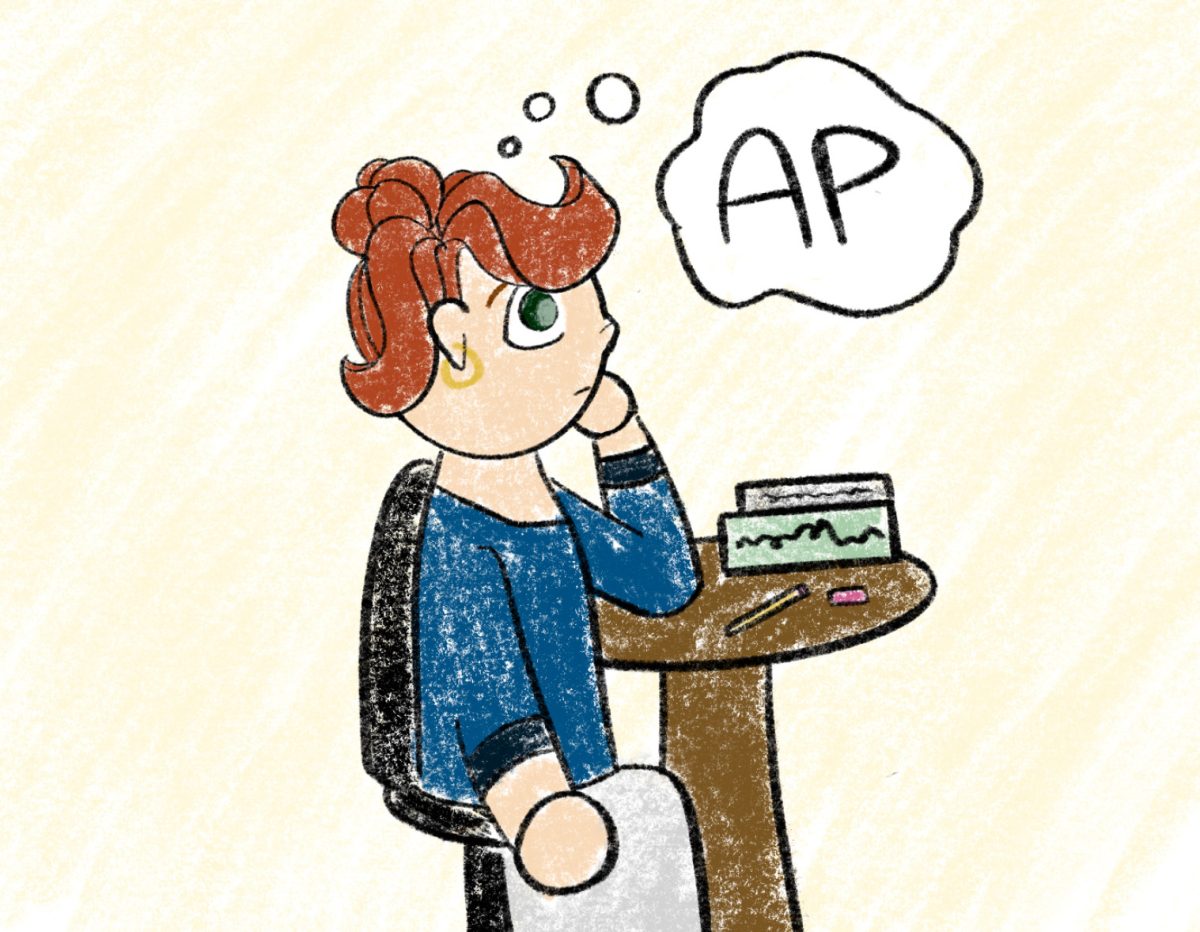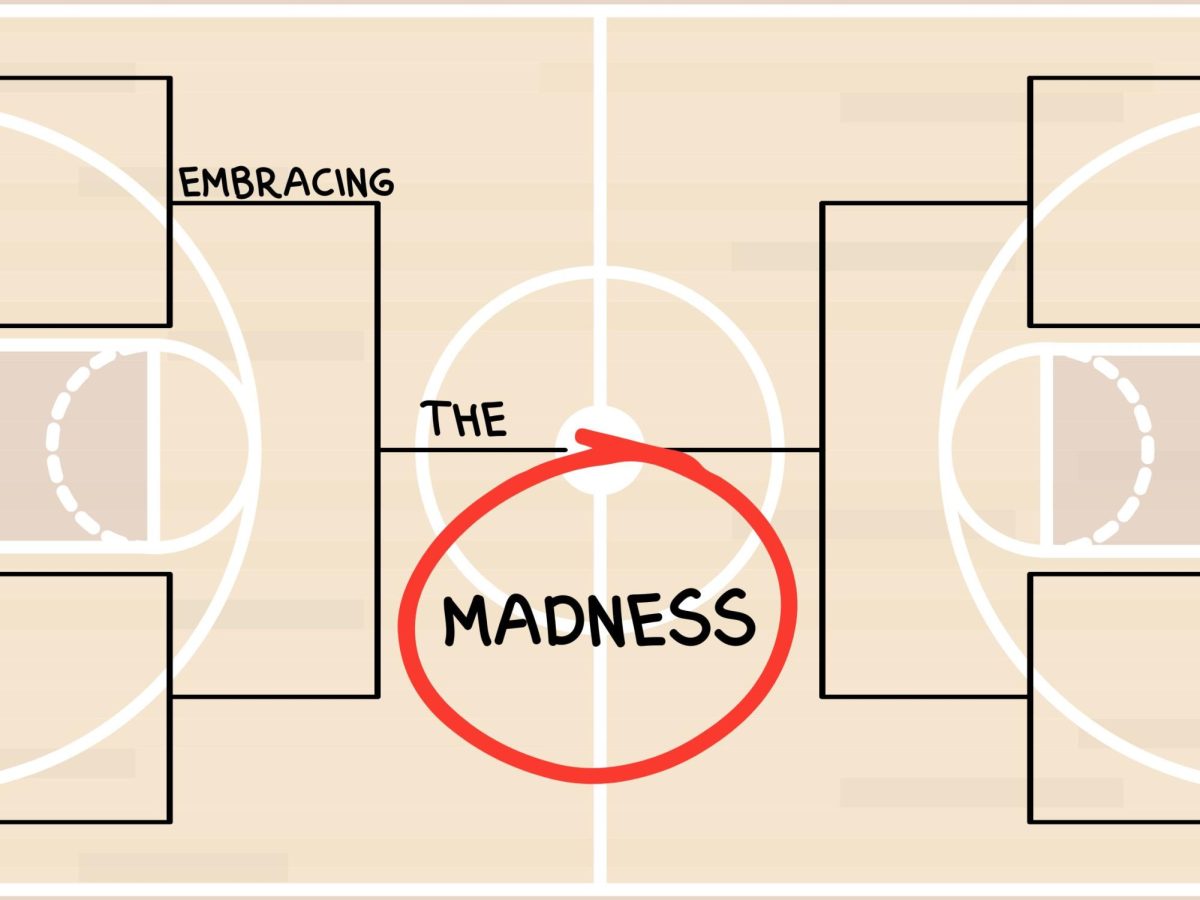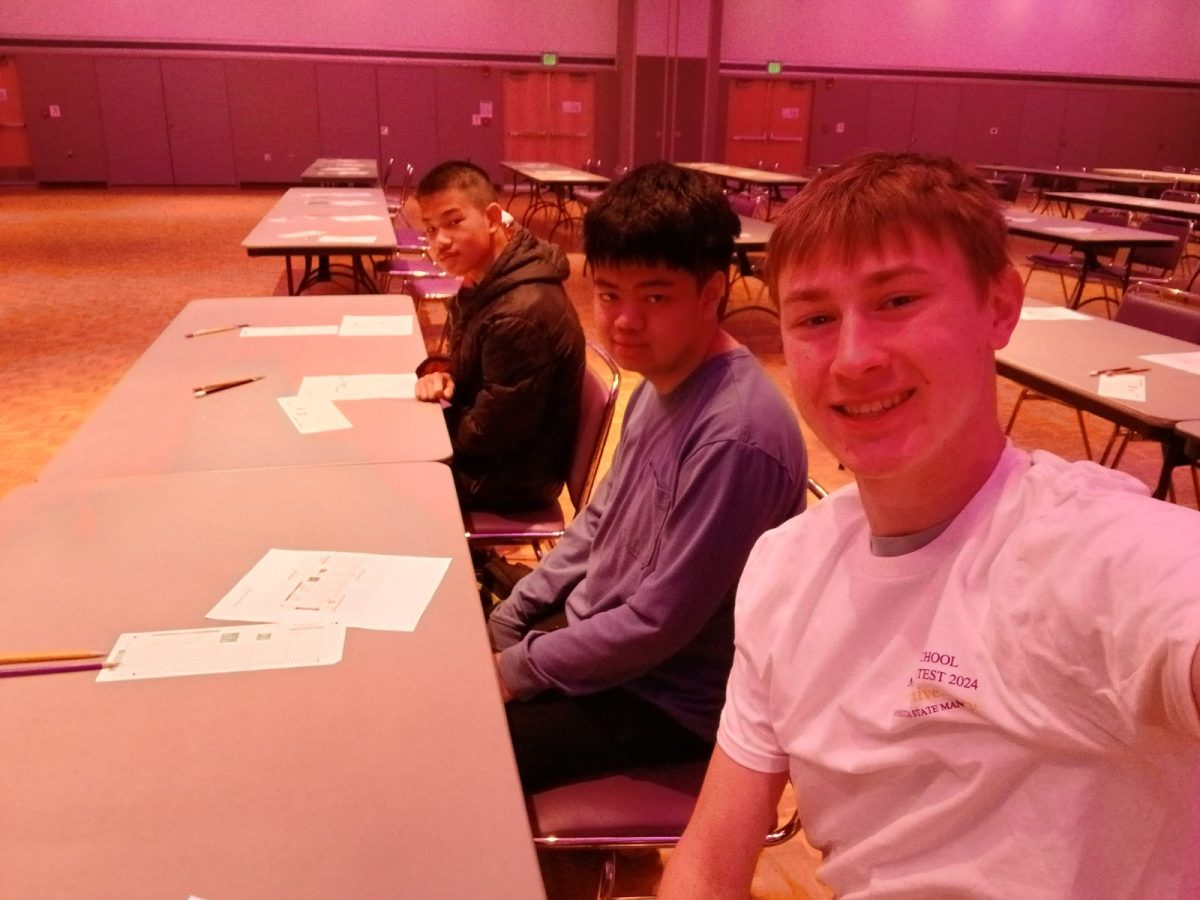Endless scrolling. Short videos. Online learning close behind. Surrounded by fast-paced, ever-changing media and the lasting effects of a global pandemic, teenagers’ attention spans have suffered greatly. In the last few years, research has shown that the global average attention span has shrunk significantly.
A study done by Gloria Mark, a psychologist and the chancellor’s professor of informatics at the University of California Irvine, has shown the average attention span has decreased by a minute and forty seconds since 2004. While this continuous shrinkage in attention spans is concerning to researchers in itself, it has also posed a major threat to education.

West High Spanish teacher Jamie Sandhu has experienced this firsthand through her years of teaching. She has noticed a decline in her students’ attention spans, largely due to the increased usage of phones and computers inside and outside the classroom.
“As far as not keeping your attention focused on what’s happening in the classroom because you’re constantly thinking about who said what or what was posted and all that kind of stuff [is an effect of technology],” Sandhu said. “In addition to that, though, I think that attention spans also have become worse because everything has become so instant now.”
The decline of a teenager’s attention span can have detrimental effects when it comes to learning and applying certain skills, and it has even affected the attitude that many students have toward learning. Although the effects of this can be seen in any subject, Sandhu notes the specific difficulties for students in foreign language classes.
“I think that it’s greatly affected my teaching because I know the attitude is ‘Well, why do I need to know about the root words […] I can look it all up very, very quickly.’ You’re right, you can, but you [don’t] want to be doing that when you’re trying to have a conversation with a native speaker,” Sandhu said.
The rise of technology has played a major role in the continuation of shrinking attention spans, so much so that they are starting to become one and the same. Mark, when asked in an interview with Newsweek, stated that while people tend to blame technology as the entire reason for the decline of attention spans, it’s not necessarily 100% to blame.
West High Social Studies teacher Michael Mettenburg has noticed this phenomenon throughout his 10 years of teaching.
“There’s always been kids that get distracted really easily. […] I don’t think kids’ attention spans have deteriorated,” Mettenburg said. “Is a deteriorating attention span the same thing as having a computer in your pocket and being on it? I don’t think [they are the same thing], I think they’re different.”
While Mettenburg hasn’t noticed the shrinking of his students’ attention spans, his teaching has been affected by an increase in technology, similar to the ways Sandhu’s teaching has been affected.
“I’ve taught when there wasn’t any of that [technology]. I do Blookets every Monday and I don’t care if a kid does it on their phone […],I think that has changed my teaching style every day,” Mettenburg said. “There’s so many cool things with technology that you could be doing that I don’t need to do, but I’ve learned to try to keep up with it.”
Although Mettenburg and Sandhu have noticed different things when it comes to their students’ attention spans, they share the belief in providing a reason behind the content they are presenting. They have found that simply explaining why can increase the amount of attention their students put into assignments.
“I always try with my students to explain my position, and explain to them why I want them to focus on something longer and not just immediately tackle an assignment that I give them with a goal of finishing as fast as [they] can. Because that happens a lot. That’s why I like to hold the papers in my hand even for a little bit before I [give them to the students] because I have things to say. They’re not gonna listen once they get the paper because [they’re] like, ‘Okay, I have to do this now’,” Sandhu said.
Mettenburg has similar ideas, acknowledging the changing attitude of students as technology usage increases and the amount of attention students give to their assignments decreases.
“I think it has become more important for teachers to make sure that their lessons and what they’re teaching is purposeful and challenging. Because that’s when you see kids are pulling out their phones, when they either don’t understand why we’re doing this or they don’t understand the purpose of it. ‘How is this helping me? How is this getting me to the next step?’ Or they’re not challenged enough and they finished it in five minutes,” Mettenburg said.
Over the last few years, the intertwining of attention spans and the increase in technology usage has created many new challenges for teachers and students. These challenges have posed threats to learning and to educating, changing the teaching styles of teachers at West.

























